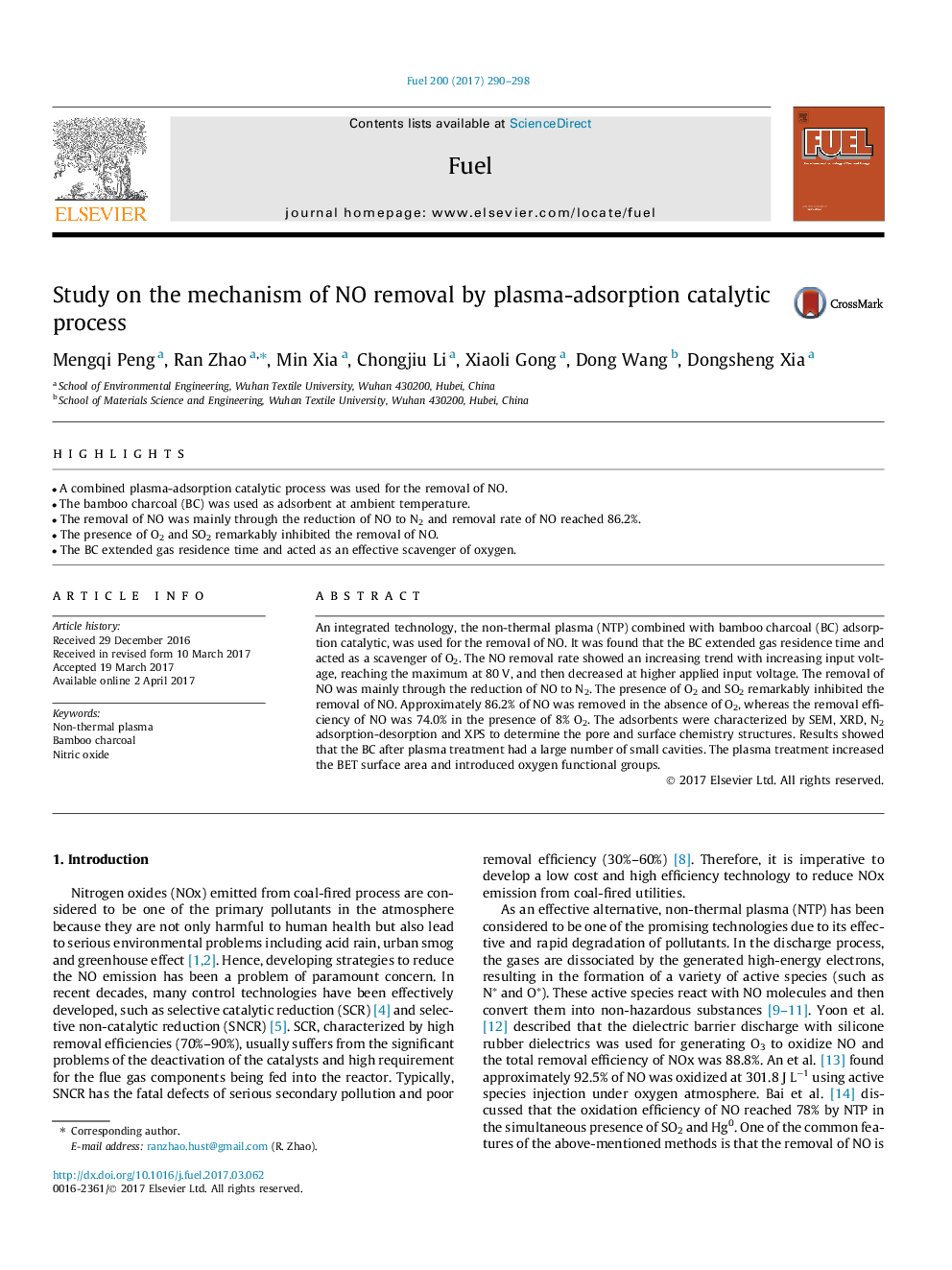| Article ID | Journal | Published Year | Pages | File Type |
|---|---|---|---|---|
| 6473744 | Fuel | 2017 | 9 Pages |
â¢A combined plasma-adsorption catalytic process was used for the removal of NO.â¢The bamboo charcoal (BC) was used as adsorbent at ambient temperature.â¢The removal of NO was mainly through the reduction of NO to N2 and removal rate of NO reached 86.2%.â¢The presence of O2 and SO2 remarkably inhibited the removal of NO.â¢The BC extended gas residence time and acted as an effective scavenger of oxygen.
An integrated technology, the non-thermal plasma (NTP) combined with bamboo charcoal (BC) adsorption catalytic, was used for the removal of NO. It was found that the BC extended gas residence time and acted as a scavenger of O2. The NO removal rate showed an increasing trend with increasing input voltage, reaching the maximum at 80Â V, and then decreased at higher applied input voltage. The removal of NO was mainly through the reduction of NO to N2. The presence of O2 and SO2 remarkably inhibited the removal of NO. Approximately 86.2% of NO was removed in the absence of O2, whereas the removal efficiency of NO was 74.0% in the presence of 8% O2. The adsorbents were characterized by SEM, XRD, N2 adsorption-desorption and XPS to determine the pore and surface chemistry structures. Results showed that the BC after plasma treatment had a large number of small cavities. The plasma treatment increased the BET surface area and introduced oxygen functional groups.
